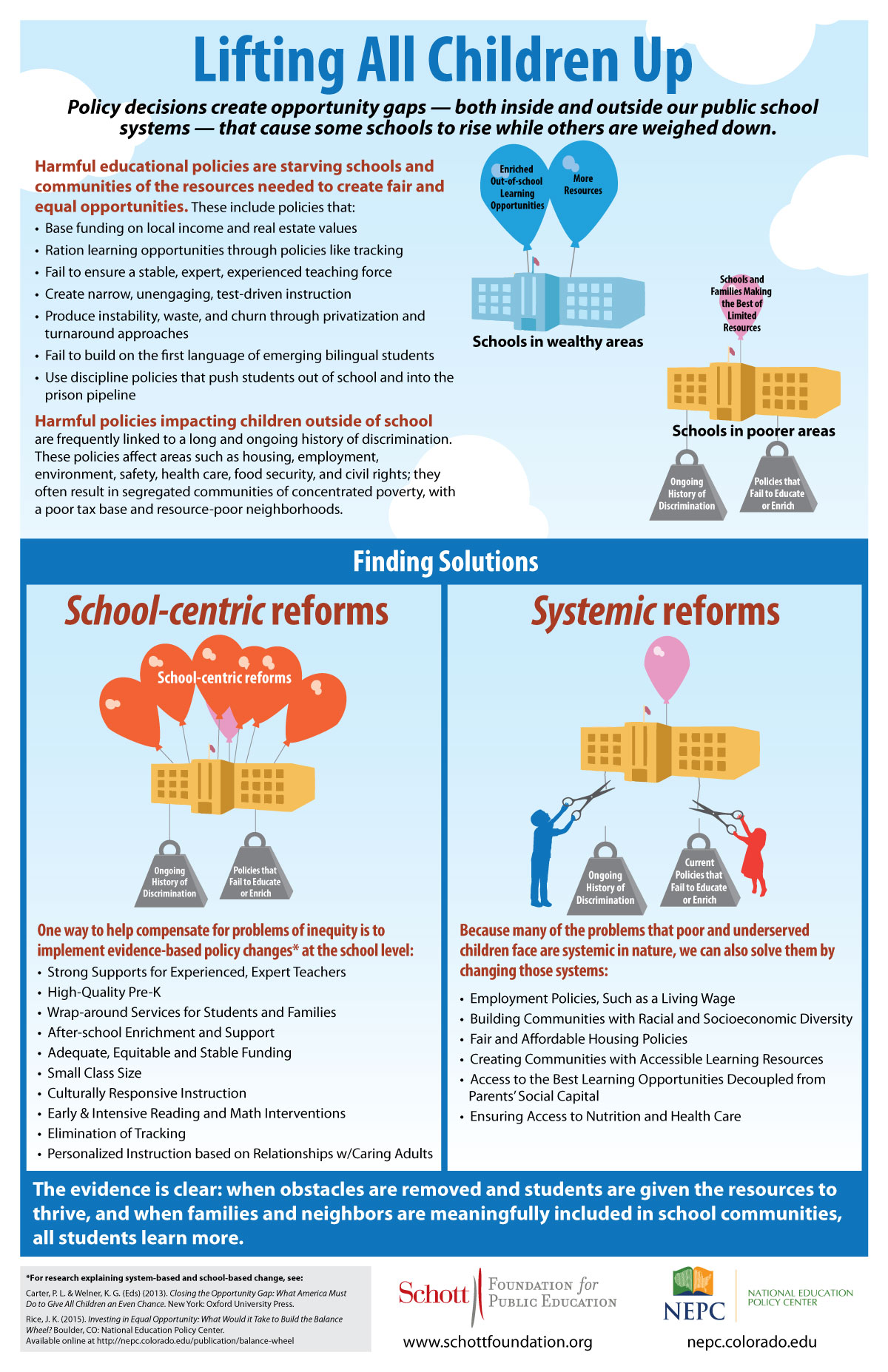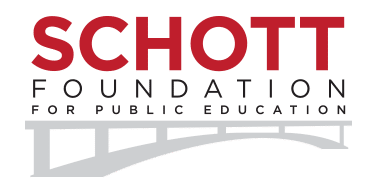Infographic
Lifting All Children Up
What will it take to ensure that all children have an opportunity to learn, regardless of their background or which school they attend? The work of the National Education Policy Center at the University of Colorado has long pointed out that the problems of inequity in public education aren’t just contained within our public schools, but also stem from larger structural issues in the community like unemployment, poverty, and disinvestment of public resources.
These structural problems weigh down students and their schools in ways that more affluent communities never have to deal with. So how do you compensate for added weight? Two possible solutions are shown in NEPC’s and Schott’s infographic below.
We can counteract the weight — that is, intervening at the school level to increase resources and supports. But we could also cut those weights off entirely by solving those structural issues. Neither option is easy, but any just future for our children and communities demands that we act.
Horace Mann once wrote that public education should be the “balance wheel” of society: able to raise all people up regardless of their background and give them an equal opportunity to succeed. The school-centric reforms start to flesh out what exactly we would need to do to see Mann’s vision come true. The systemic reforms offer solutions that cut closer to the true root of the problems so many children face.
The reforms listed in the graphic are drawn from NEPC policy recommendations by Jennifer King Rice, along with the book Closing the Opportunity Gap by Prudence Carter and Kevin Welner.


